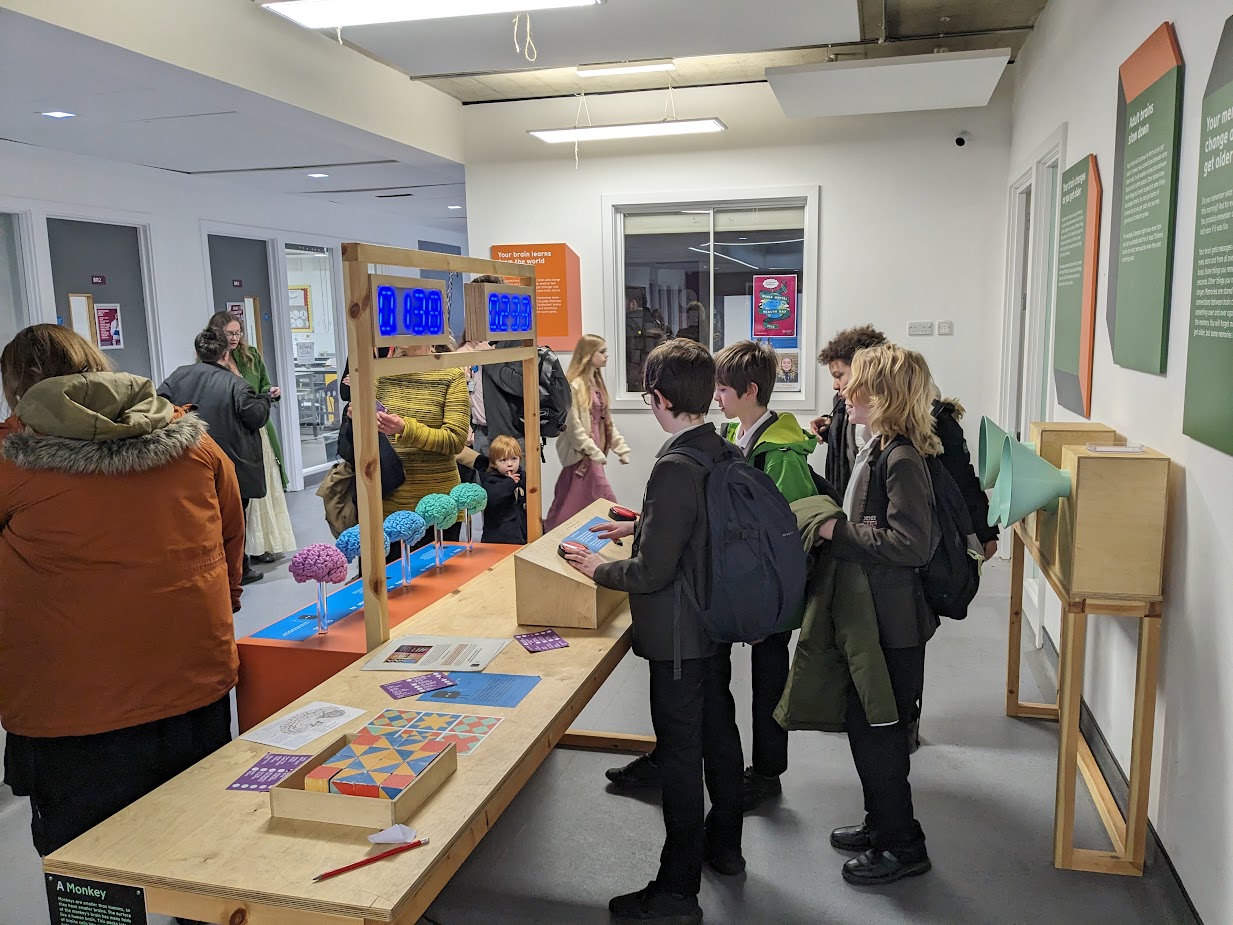Vintage toys and games at Rumble Museum's Toys and Games Collection afternoon
 A 1930s wooden train, an original set of scrabble, and a cash register with shillings and pence were some of the items which came through Cheney School's doors at the Rumble Museum's Collection afternoon yesterday.
A 1930s wooden train, an original set of scrabble, and a cash register with shillings and pence were some of the items which came through Cheney School's doors at the Rumble Museum's Collection afternoon yesterday.
The Museum of Oxford was there with a range of artefacts to display too, and Ms Gersh, data manager, brought some of the toys she had designed in an earlier career as a toy designer! We were also delighted to welcome Bernard Stone, an alumnus from the Cheney Technical School in the 1950s who brought an impressive array of objects. Students, staff and parents were able to explore artefacts and share their stories of childhood. BBC Radio Oxford were also there to speak to people about their experiences of childhood.
A community vote on favourite toys was also held, and lego came out as the winner!
All these stories and objects will slowly begin to be turned into a brand new exhibition about the History of Childhood, which will be displayed in converted old lockers.
The exhibition will be curated by our Museum Council students, with support from the Museum of Oxford, and will be launched later in 2025.
We are still very much open for any donations of toys, games and books from childhood - please email This email address is being protected from spambots. You need JavaScript enabled to view it.
 St Giles' Cafe, Gloucester Green, Martyrs' Memorial, Cheney School, Lady Margaret Hall, C.S. Lewis Nature Reserve, and St Mary and St John Church are some of the well-known locations around the city which features in a new novel illustrated by handmade linocut prints featuring birds.
St Giles' Cafe, Gloucester Green, Martyrs' Memorial, Cheney School, Lady Margaret Hall, C.S. Lewis Nature Reserve, and St Mary and St John Church are some of the well-known locations around the city which features in a new novel illustrated by handmade linocut prints featuring birds. 
 We are very lucky that Sarah Lloyd and Anya Jung from the Natural History Museum are training a group of Year Eight students to co-run activity tables at our forthcoming Creature Festival on 11th October!
We are very lucky that Sarah Lloyd and Anya Jung from the Natural History Museum are training a group of Year Eight students to co-run activity tables at our forthcoming Creature Festival on 11th October! Yesterday we celebrated the arrival of the fabulous Your Amazing Brain Exhibition with our Brain Festival!
Yesterday we celebrated the arrival of the fabulous Your Amazing Brain Exhibition with our Brain Festival!  We are excited to be launching our Brain Season at the Rumble Museum this January!
We are excited to be launching our Brain Season at the Rumble Museum this January! On Tuesday 19th December, we were blessed with beautiful clear skies just in time for our astronomy and stargazing evening!
On Tuesday 19th December, we were blessed with beautiful clear skies just in time for our astronomy and stargazing evening!

 Next term, we are excited to be working with the History of Science Museum on an exciting project to create some new technology displays in our new cabinets on the first floor of the Lane Building.
Next term, we are excited to be working with the History of Science Museum on an exciting project to create some new technology displays in our new cabinets on the first floor of the Lane Building. On Saturday morning, our Year Eight Museum Council students ran a broad and creative variety of stalls and activities amongst our beautiful trees and new tree trail signs for visitors of all ages to come and enjoy. There was potato printing, butterfly cakes, duck fishing, tree riddles and more, as well as tree trail guides to follow, and students ready to tell people more about the trees.
On Saturday morning, our Year Eight Museum Council students ran a broad and creative variety of stalls and activities amongst our beautiful trees and new tree trail signs for visitors of all ages to come and enjoy. There was potato printing, butterfly cakes, duck fishing, tree riddles and more, as well as tree trail guides to follow, and students ready to tell people more about the trees. On Friday 20th October, the Rumble Museum held a Labyrinth Festival at Cheney School, celebrating labyrinths through the ages from ancient Knossos to modern day films and stories. Cheney students and external organisations ran a range of creative activities and stalls exploring mazes and labyrinths, including a room themed on Knossos, with 3D printed artefacts from the Ashmolean's Knossos exhibition, a Linear B logogram guessing activity, octopus jar decoration, a giant magnetic maze, and beautiful displays by East Oxford Primary School children, explore labyrinths on mine craft with the Story Museum, and take part in printing on the Rumble Museum's Victorian printing press.
On Friday 20th October, the Rumble Museum held a Labyrinth Festival at Cheney School, celebrating labyrinths through the ages from ancient Knossos to modern day films and stories. Cheney students and external organisations ran a range of creative activities and stalls exploring mazes and labyrinths, including a room themed on Knossos, with 3D printed artefacts from the Ashmolean's Knossos exhibition, a Linear B logogram guessing activity, octopus jar decoration, a giant magnetic maze, and beautiful displays by East Oxford Primary School children, explore labyrinths on mine craft with the Story Museum, and take part in printing on the Rumble Museum's Victorian printing press.